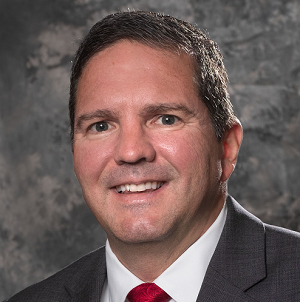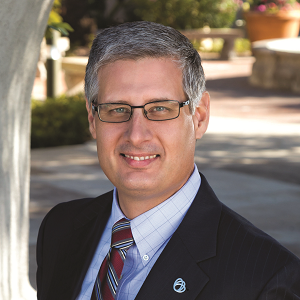Top-Level Takeaways
- Nearly 80 bank deals have been announced since 2012, generating big headlines but a small percentage of overall credit union M&A activity.
- In some cases, bank purchases are cheaper than de novo expansion efforts.
- Good relationships are crucial to success — with regulators, diligence partners, the institution being acquired, and more.
Although a bank purchase might not be front and center in the minds of most credit union leaders, strategic growth plans and ready-made opportunities to make an impact in new markets are driving more of these transactions.
A dozen such deals have been announced so far this year, eclipsing 2023’s total, for a total of just under 80 bank purchases since 2012, according to America’s Credit Unions.
But what exactly does it take to buy a bank and see the process through successfully? And once the transaction is done, how can credit unions guarantee success? Here are five lessons from credit unions who have been there.
1. Buying A Bank Can Be Cheaper Than Building New Branches
United Federal Credit Union ($4.1B, Saint Joseph, MI) purchased its first bank in 2011 and has been credited with starting the industry’s bank-purchasing trend. Leaders there start the process by conducting a tremendous amount of research before entering a new market, and CEO Terry O’Rourke sees the clear economic benefits of buying versus building.
“We’d really only enter a brand-new market through a merger or acquisition,” O’Rourke says. “It’s far too expensive to enter a market where you have no presence and just start building branches.”

Pima Federal Credit Union ($1.2B, Tucson, AZ) is currently wading through the regulatory-approval process following an agreement to acquire Republic Bank of Arizona. The credit union hopes to close the transaction by year-end.
Pima initially planned to expand through de novo branches, but CEO Eric Renaud says the opportunity to purchase a bank was too good to pass up because it meant not having to start from scratch in a new community.
“Our board has always had an appetite for mergers or a potential purchase, but honestly a bank purchase was probably not exactly first and foremost on our minds,” Renaud says. “For many years, as part of our strategic planning process, we’ve focused on growing geographically throughout our state.”
Buying Republic made sense in part because it offered a significantly shorter payback period compared to building new brick-and-mortar facilities. Branching out geographically also helps the credit union reduce risk.
“Moving beyond our immediate community means we’re not entirely subject to the winds of the economic environment in just Pima County or Tucson,” Renaud says. “We’ve had Maricopa County in our sights because we saw a good market and an opportunity to help grow membership and make a difference in those communities.”
Don’t try to make all markets the same. What works in one place might not work in another.”
2. Understand The Opportunity – And The Risks
Dort Financial Credit Union ($2.3B, Grand Blanc, MI) purchased Florida-based Flagler Bank in late 2023 and launched Flagler Credit Union as a division of Dort Financial shortly thereafter. The credit union’s board had discussed strategic expansion into the Sunshine State even before it was approached with the opportunity to buy the bank. Not only were the two culturally and financially aligned, but an internal study showed many Dort members were already frequent Florida visitors.

“Some of it is the snowbird effect — with members spending a few months at a time there — but we also saw a region that was economically booming,” says Brian Waldron, CEO of Dort Financial. “We wanted to serve our existing members who are there and gain geographic diversification for our portfolio. In the West Palm Beach area, specifically, there is lots of growth and opportunity to offer small business and consumer products alike.”
For Pima, knowing when to pass on an opportunity is just as important as knowing when to move forward.
“It’s also important to determine early on if something isn’t for you,” Renaud says. “Having a good strategic consulting partner is a critical first step. But even before that, the CEO needs to have a conversation with the board to understand what their appetite is and what they want to see.”
An appetite for market expansion is crucial, adds Renaud, as are strong capital ratios. Pima and Republic also complemented each another. Republic’s forte was commercial lending — an area where Pima wanted to expand — and the credit union was already well-versed in consumer banking and lending.
“Both of our institutions also do cannabis banking, which was a big plus,” Renaud says. “It was important to Republic to continue serving its clients in that space and the deposit relationships provide liquidity.”
Prior to entering any new market, United FCU’s due diligence process considers size, population growth, competitors, the local economy, and more.
“We prefer markets that aren’t major metro areas and have populations between 500,000 and 1 million people — where we’re able to make more of an impact,” O’Rourke says.
United also has a minimum size requirement, since small M&A deals take the same amount of time and resources as larger ones.
“All else being equal, we prefer to go into a market with more scale,” O’Rourke says. “Generally speaking, you’re able to find larger bank-acquisition targets than credit union merger partners.”
3. A One-Size-Fits-All Approach Won’t Work
Although credit unions are focused on finding the right partner, so, too, are community banks. According to Renaud, the fact Pima also is headquartered in the Grand Canyon State made a big difference for Republic.

“It’s a small community bank that is super invested in its community and it was important to find a financial institution in Arizona,” he says.
United’s potential M&A deals include a rigorous assessment of the other institution’s culture.
“We want to retain the employees from the bank or credit union,” O’Rourke says. “Entering a new market becomes exponentially easier if you maintain the people.”
United views itself as a national credit union and appreciates local nuances in the various markets it serves.
“Don’t try to make all markets the same,” O’Rourke advises. “What works in one place might not work in another. For example, North Carolina is a very strong commercial market, whereas Nevada is a very strong mortgage market for us.”
4. Don’t Go It Alone
Pima runs a lean shop and didn’t have a lot of extra resources available for due diligence.
“We took some initial cursory views and then hired several partners to help us dig deeper from both a financial-modeling and forecasting perspective as well as on the regulatory front once we settled on a fair price and got past the negotiations,” Renaud says. “We hired attorneys, an investment banker, and a third party to conduct our loan portfolio review, which the credit union also reviewed.”
Along with hiring attorneys and outsiders to help review the deal and the bank’s loan portfolio, Pima leadership also reached out to NCUA.
“We didn’t want our regulatory bodies to find out in a letter or when we submitted the application,” the CEO says. “We wanted to partner with them proactively and treat them as a resource in this process.”
Likewise, the bank reached out to the FDIC and Arizona Department of Financial Institutions to let them know about the institutions’ plans.
The application process required Pima to provide the FDIC with a plan on how the credit union would go about “member-izing” Republic Bank’s existing customer base. Those customers must opt-in to membership and the credit union will need to contact each one to encourage that. Pima created a communication plan to address that process.
5. Communicate – But Be Patient, Too
Communication is key to the success of acquiring and maintaining members. It’s also important for internal teams on both sides of a transaction.
“Our team over-communicated with members and staff,” says Dort’s Waldron. “We sent letters, emails, etc. As members ourselves, we understand that change is difficult.”
Dort had its own employees on-site to assist after the conversion, but maintaining the bank’s employees made things easier because the bank’s customers saw the faces they already knew and trusted.
Communicating with credit union staff was also crucial — especially for those closer to home.
“It’s amazing how many of our employees in Michigan wanted to know more about what we were doing in Florida, and the bank employees in Florida needed to understand the acquisition,” Waldron says. “There can be trepidation on both sides, which makes it important to keep both teams informed even before you start communicating with customers/members.”
And, he adds, don’t forget that these things don’t happen quickly.
“Take the time to align products and services,” he advises. “But also take a deep breath and be patient.